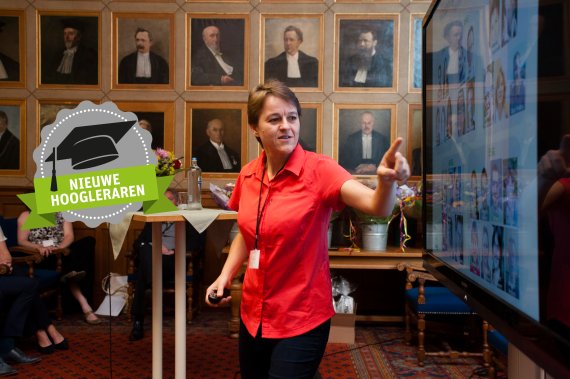Photo: David Vroom
The legacy left by plants can be seen in various places. Think of soil life, for example. Plants create conditions in which specific fungi and bacteria thrive – both good and bad. And thus, the plants determine what species can fare well at a given spot. Plants also influence the amount of organic materials in the soil. De Deyn is curious about the details of how this interaction between plants and soil works. She wants to gain a deeper understanding than the generalisations such as ‘a diversity of plants is favourable’.
These fundamental insights could also be used in agriculture. Legacies can also influence the growth of newly planted crops. It is useful for farmers to understand this process. For a while now, De Deyn has also been studying legacies from above. Using remote sensing, observation using satellites, she hopes to be able to see at an early stage – before it is visible to the naked eye – whether plant growth lags on certain kinds of soil.
Time-lapse movies
In the meantime, De Deyn is diligently working on her own scientific legacy in various ways. She is one of the editors of the Global Soil Biodiversity Atlas; a recently presented book that maps all soil life – from fungi and bacteria to worms and moles. She is also very active in reaching out to the general public. Examples include her activities at the Science Café Wageningen and helping rope in Bill Gates for College Tour. Together with an artist, she also produces time-lapse movies of soil life.
Why she puts all those responsibilities on her own shoulders? ‘I sometimes wonder that myself’, she says jokingly. The attention for the soil movies brings De Deyn back to the first time she saw through a microscope how a root was affected by a nematode. ‘That was truly a wow-moment.’ She would like to offer everyone such a look into soil life. And in the movie, you can see how it all connects, at what scale the processes take place and how this changes over time.
Politicians
And in a way, she has to. The general public, but also politicians, do not think much about soil. All positive effects are taken for granted. ‘The movies are even interesting for insiders’, says De Deyn. ‘Many fellow researchers have never seen these animals, interactions or processes in action.’
Related articles (in Dutch):
Astronaut krijgt atlas bodemleven
Life, but not as we know it
Bodem vaart wel bij diverse plantengroei

